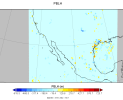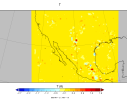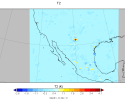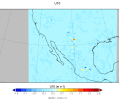Feng Liu
Member
Hi all,
I previously built WRF on our old Linux cluster using the PGI compiler. We've recently upgraded our cluster and I successfully built WRF v4.6.1 on the new system using the Intel compiler with option 78 (dmpar) – INTEL (ifx/icx): oneAPI LLVM.
I ran the same WRF case on the new cluster using:
Old cluster: seed_dim_stag = 34 ;
New cluster: seed_dim_stag = 2 ;
When I attempt to compare the outputs using ncdiff, I receive the following error:
ncdiff: ERROR Variables do not conform: variable /ISEEDARRAY_SPP_CONV has dimension seed_dim_stag with sizes 34 and 2 in input files one and two, respectively.
This discrepancy seems to stem from the variable ISEEDARRAY_SPP_CONV being tied to seed_dim_stag, which differs between the two systems.
Has anyone encountered this issue before? Could this be related to portability issues when moving WRF between different compilers or system architectures?
Any insights or suggestions would be greatly appreciated.
Thanks,
Feng
I previously built WRF on our old Linux cluster using the PGI compiler. We've recently upgraded our cluster and I successfully built WRF v4.6.1 on the new system using the Intel compiler with option 78 (dmpar) – INTEL (ifx/icx): oneAPI LLVM.
I ran the same WRF case on the new cluster using:
- The exact same WRF version (WRF4.6.1)
- The same run script and configuration files
- The same input data
Old cluster: seed_dim_stag = 34 ;
New cluster: seed_dim_stag = 2 ;
When I attempt to compare the outputs using ncdiff, I receive the following error:
ncdiff: ERROR Variables do not conform: variable /ISEEDARRAY_SPP_CONV has dimension seed_dim_stag with sizes 34 and 2 in input files one and two, respectively.
This discrepancy seems to stem from the variable ISEEDARRAY_SPP_CONV being tied to seed_dim_stag, which differs between the two systems.
Has anyone encountered this issue before? Could this be related to portability issues when moving WRF between different compilers or system architectures?
Any insights or suggestions would be greatly appreciated.
Thanks,
Feng




